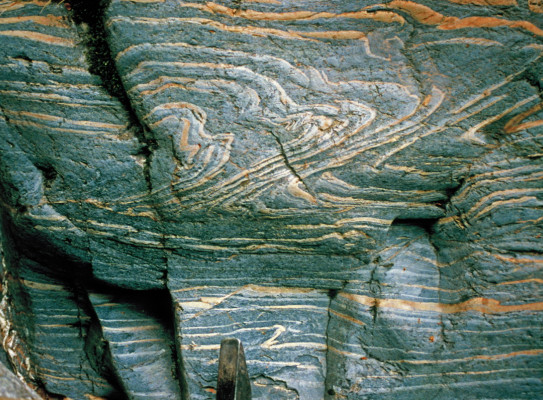
Te Riu-a-Māui Zealandia through timeHow fossils and software improve our geological timescale

Many processes shape the Earth and, locally, the continent of Te Riu-a-Māui Zealandia.
Overview
The climate system acts on a range of timescales from weather (hourly) to ocean circulation (1000s of years) and solar radiation (100,000s of years). Tectonic and volcanic influences on equally short- (earthquakes or eruptions) and long- (tectonic plates) timescales.
But we now have many methods of determining the age of rocks that form the Geological Timescale.
We need to integrate these methods to reveal the primary drivers of Earth change and the responses.
Key climate records are found in the ocean. The impacts of climate on our environment are found on land. Software has helped resolve the challenges of correlating these records.
Biological evolution is one of the earliest methods of dating the sedimentary sequences which hold Earth’s history. As we add more sampling locations, we can apply statistical software to analyse geographical distribution and resolve the diachroneity (differences in time) of species evolution. This helps to improve the Geological Timescale, giving more confidence in correlating events in the past and determining the cause of those events from climatic, tectonic or other drivers.
Our dating techniques
Ocean sediments are drilled in the deep sea to recover the most continuous record through time. The First and Last Appearance Datums of certain species are used to track time and correlate one site to another. We also use other dating techniques such as:
- magnetostratigraphy (changes in the magnetic field)
- ash deposits from eruptions
- physical and geochemical properties (stratigraphy).
All of this information is integrated to form the Global Geologic Timescale. We also have local timescales like the New Zealand Geological Timescale because the timing of the events can be subtly different in different places – particularly in regard to biological evolution.
The New Zealand timescale continues to build upon many years of observations. However, some of these methods are antiquated and need updating, and new methods like astrochronology (dating the influence of Earth’s orbit) need integration.
Constrained Optimisation (CONOP) is statistical software that optimises the sequence of biological events within geological constraints. Or, in simpler terms, it assesses the relative sequence of events across a number of sites and finds the most consistent sequence that agrees with most of the sites.
GNS Science has been heavily involved in developing a Southern Ocean database of biological evolution including foraminifera, diatoms, radiolarians and nano-fossils. We are collating a similar database for Zealandia that will include stratigraphy (sediment layers) and terrestrial biology (e.g. pollen) that will be analysed using CONOP.

Research project details
Collaborators: Victoria University of Wellington, University of Wisconsin-Madison (USA)
Duration
Funding platform
Ministry of Business, Innovation and Employment’s Strategic Science Investment Fund
Status
Ongoing
Leader
Vaughan Stagpoole, GNS Science